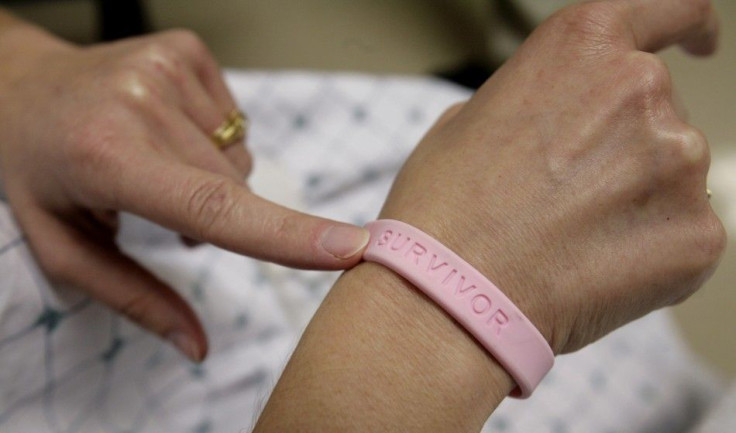Breast Cancer Genetic Atlas Finds Similarities To Ovarian Cancer

Certain kinds of breast cancer resemble ovarian tumors more than they resemble other kinds of breast cancer, according to a new study that offers greater insight into the genetic differences between four distinct subtypes of the condition.
One of the bigger takeaways of the finding, reported in a paper published in the journal Nature on Sunday, is that Basal-like breast tumors and ovarian tumors could potentially be treated by the same drugs.
"The molecular similarity of one of the principal subtypes of breast cancer to that found in ovarian cancer gives us additional leverage to compare treatments and outcomes across these two cancers," National Cancer Institute director Harold Varmus said in a statement on Sunday. "This treasure trove of genetic information will need to be examined in great detail to identify how we can use it functionally and clinically."
The four types of breast cancer examined by a consortium of institutions known as the Cancer Genome Atlas, or TCGA, are called HER2-enriched, luminal A, luminal B and basal-like breast cancer.
Basal-like breast cancer is also often referred to as triple negative breast cancer, because most basal-like tumors do not express the genes for three kinds of receptors: estrogen receptor, progesterone receptor or growth factor receptor HER2. These receptors are common targets of breast cancer treatments in development, making basal-like tumors especially tricky to eliminate. Ten percent of all breast cancers are comprised of basal-like tumors, and the condition is more common among younger women and African-American women.
The genetic analysis described in the Nature paper drew upon the resources of a broad consortium of institutions. Scientists looked at tumors from 825 female breast cancer patients and used various techniques to look for irregularities in extracted samples of DNA, RNA and proteins.
Eighty percent of the basal-like tumors the researchers examined have mutations in a gene called TP53, a gene that is also mutated in many ovarian cancers. The TCGA’s analysis suggests that both basal-like breast cancer and serious ovarian cancer could be susceptible to drugs that cut off blood supply to the tumor.
Results from the genetic analysis suggest that patients with mutations in the BRCA1 or BRCA2 genes, which are two of the more common in herited genetic mutations that lead to Basal-like breast tumors, could benefit from two existing treatments for ovarian cancer. One such treatment is platinum-based chemotherapy, which uses drugs that contain the metal platinum to damage cancer cells’ DNA and interfere with the tumor cells’ ability to divide.
Another ovarian cancer treatment that could be repurposed for treating breast cancer patients with BRCA mutations is a class of drugs called PARP inhibitors. PARP inhibitors attack a protein called PARP1 that helps repair tiny nicks in a DNA strand that occur during replication. Noncancerous cells will survive the treatment, because the normal BRCA1 and BRCA2 proteins are key components in DNA repair. But in the cancerous cells, PARP can no longer compensate for the DNA damage caused by mutated BRCA1 and BRCA2 genes, and the cancer cells self-destruct.
The researchers found that luminal cancers had the lowest frequency of mutations among the four subtypes of cancer but had higher numbers of genes with mutations. The most commonly mutation in luminal A cancer is in a gene called PIK3CA, which is also implicated in several other kinds of cancer.
“By tying together those different data sets, we can build a story around the biology of each breast cancer subtype that is dictated by the genome, interpreted by the RNA and played out by the proteins at work inside each tumor,” Washington University in St. Louis researcher Elaine Mardis, a coauthor of the paper, said in a statement on Sunday. “These data can serve as a backdrop for other questions about how particular mutations affect survival or response to certain drugs.”
SOURCE: The Cancer Genome Atlas Network. “Comprehensive molecular portraits of human breast tumours.” Nature published online 23 September 2012.
© Copyright IBTimes 2024. All rights reserved.




















